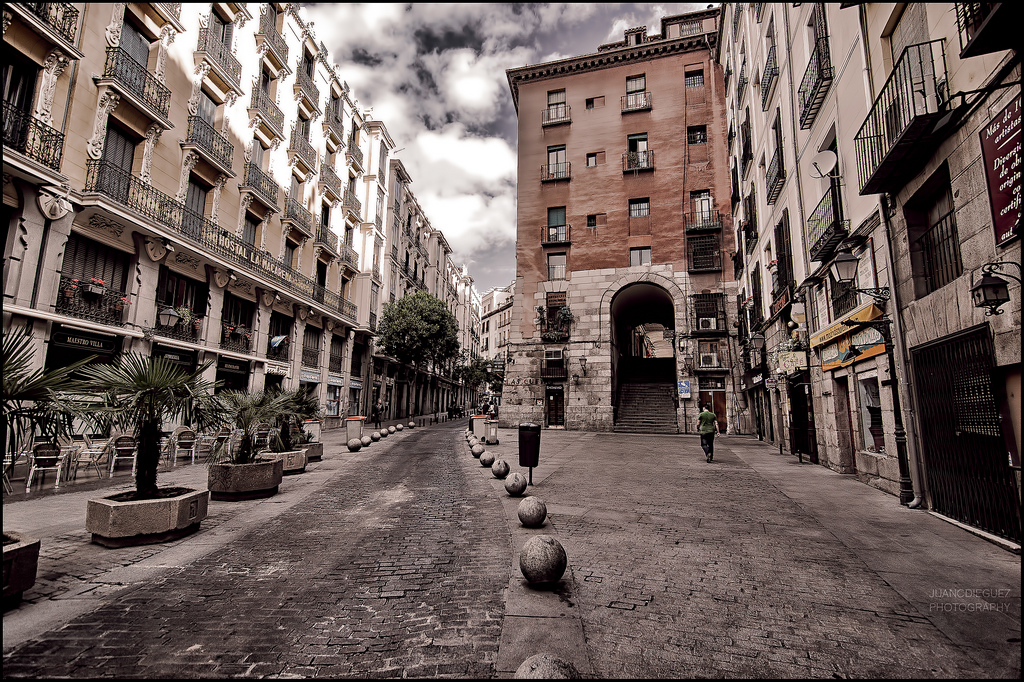Cuchilleros Street and its history

25/11/2020
The square Puerta Cerrada and the Cava de San Miguel, together with the crossing of Bringas and Cava de San Miguel, formed the so-called Cava de Puerta Cerrada, where the Christian wall of Puerta Cerrada ran.
The square Puerta Cerrada and the Cava de San Miguel, together with the crossing of Bringas and Cava de San Miguel, formed the so-called Cava de Puerta Cerrada, where the Christian wall of Puerta Cerrada ran. In this street are also two of the most typical restaurants in Madrid: Las Cuevas de Luis Candelas (in tribute to the famous nineteenth-century bandit who met in this area with his cronies after their misdeeds) and Sobrino de Botin, better known as Botin, known as the latter for being the oldest restaurant in Madrid.
The name of the street has a logical explanation, that is, at the foot of this passage, is the workshop of the guild of knives, specializing in the production and sale of knives. But why are all these knife makers here? Our answer is just a few steps away from us. We will climb the steps to reach the Plaza Mayor, where the house of the butcher's shop is located in front of the house of the bakery. For a century all meat products have been distributed from here to the different markets in the town. Of course, all the butchers who work there need a good knife as a basic working tool. Therefore, they settled there in order to provide them with these tools.
The Arco de Cuchilleros is one of the ten entrances to the Plaza Mayor. It is located in the southwest corner of the square. The name of the arch comes from Cuchilleros Street. This is because in this section of the road between Cava de San Miguel and Cava Baja was installed the guild of knives and swordsmen.
To bridge the enormous gap between the Plaza Mayor and the west side (Cava de San Miguel and Calle Cuchilleros), Juan Gómez de Mora designed the Calle de la Escalerilla de Piedra and the Arco de Cuchilleros in 1617. However, the arch we know today is the work of Juan de Villanueva, who remodeled the square after the fire of 1790. The street extends along the interior of the arch and nothing else. It starts at the first step and ends at the last one. That is, it is a street of few meters and totally staggered.
On the right, we find a small circular platform on the floor, the pulpit. From here it is said that Friar Antonio of the Convent of San Gil harangued the masses and instilled in them the courage of the people of Madrid to resist Napoleon's occupation in May 1808. Many artists have painted the Arco de Cuchilleros, such as Rubén de Luis or Romano Aira. The fact is that, because of its history and unique shape, it is an attractive corner.









